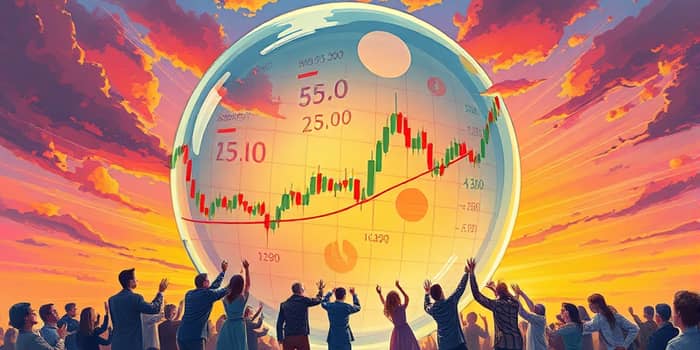
The world of investing is as exhilarating as it is unpredictable. For many, the allure of rapid gains can overshadow disciplined decision-making, leading to moments of collective euphoria that inflate asset prices well beyond their true worth.
Understanding how these phenomena unfold is vital to protecting your capital and staying grounded through market cycles.
Every bubble follows a distinct pattern, driven by shifts in sentiment and liquidity. By recognizing these phases, investors can anticipate turning points and act with foresight rather than panic.
Hyman Minsky’s framework of financial instability closely parallels these stages, illustrating how credit expansions and contractions magnify market swings.
While overvaluation is central, it is the social and financial dynamics that truly define a bubble.
Recognizing these signals early can help investors recalibrate risk and avoid the worst of the downturn.
History offers stark reminders of how quickly gains can evaporate once sentiment shifts.
From the Netherlands in the 17th century to global markets today, the cycle of boom and bust repeats, reminding us that no asset is immune to collective mania.
Spotting a bubble before it bursts requires vigilance and discipline. Look out for these classic indicators:
Monitoring these factors alongside technical indicators can provide an early warning system against irrational exuberance.
While no strategy is foolproof, adopting a disciplined approach can help you navigate turbulent markets.
Emphasizing process over predictions allows investors to stay anchored when emotions run high.
Market corrections, while painful, are integral to the health of financial systems. Over time, fundamentals reassert themselves and valuations normalize.
Equities that once suffered crushing losses have historically gone on to reach new highs, rewarding patient investors who weathered the storm.
Financial crises often spur regulatory reforms—Sarbanes-Oxley after Enron, Dodd-Frank following 2008—strengthening market integrity and protecting participants.
Stock market bubbles remind us that collective psychology can drive prices to extremes, detached from reality. Yet, with disciplined strategies and a vigilant mindset, investors can navigate these turbulent waters safely.
By learning from past excesses, recognizing warning signs, and maintaining a patient, informed investment philosophy, you position yourself to thrive even when the market’s mood swings turn dramatic.
Ultimately, true wealth is built over years of prudent decision-making, not in fleeting moments of speculative frenzy.
References













